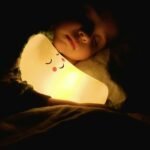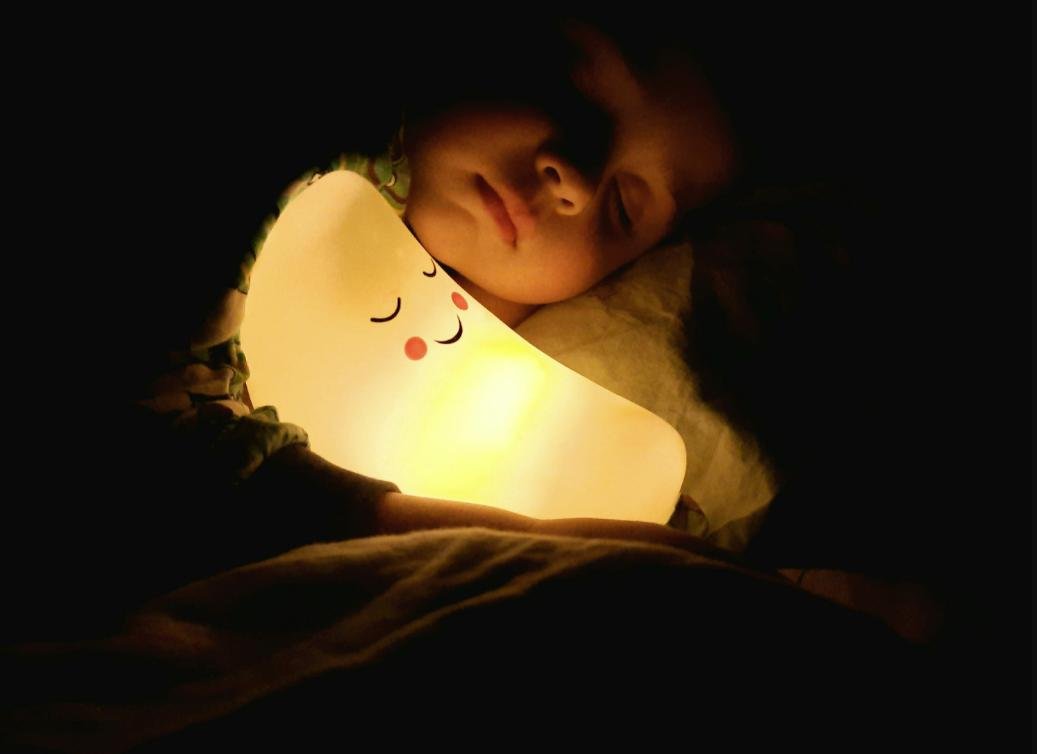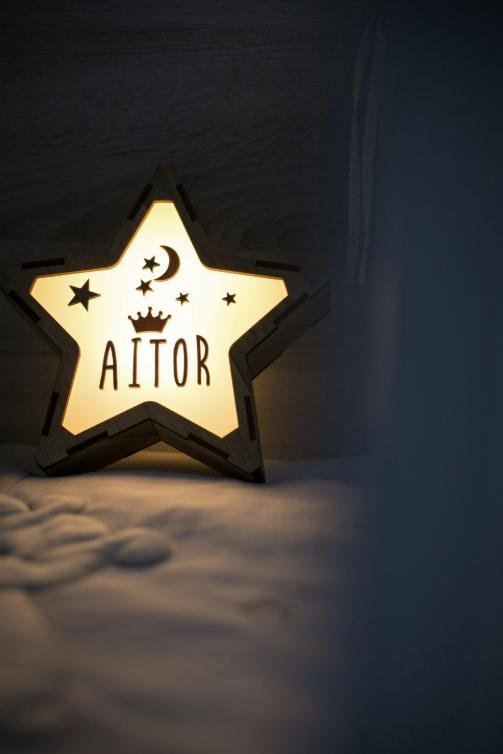Introduction to Night Lights
Night lights are low-intensity lighting fixtures designed to provide illumination during the night. These lights serve various purposes, particularly in baby nurseries, where their primary function is to create a soothing environment that supports the sleep of infants. Parents often perceive night lights as essential tools that can ease the nighttime routines for both babies and caregivers. By offering a gentle glow, these lights help parents navigate darkened spaces without the need to turn on bright overhead lights, which can be disruptive to a baby’s sleep.
The prevalence of night lights in nurseries is largely driven by the desire to ensure security and comfort for infants. Many parents believe that a softly lit room can help their babies feel more secure, reducing instances of nighttime anxiety. Furthermore, existing research suggests that a dimly lit environment can promote relaxation and foster sleepiness, which may be advantageous for developing healthy sleep patterns in infants. As both a practical solution and a nurturing element, night lights are frequently incorporated into the bedtime rituals of many families.
Despite their common use, parents vary widely in their opinions regarding the appropriateness and effectiveness of night lights for babies. While some advocate for their benefits, others express concerns about potential drawbacks, such as sleep disruptions caused by light exposure. When considering the addition of a night light to a nursery, caregivers often evaluate factors such as the light’s brightness, color temperature, and placement to optimize its effectiveness without compromising their baby’s sleep quality. A comprehensive understanding of night lights and their implications can guide parents in making informed decisions about their use in fostering a conducive sleep environment for infants.
The Science of Sleep in Infants
The sleeping patterns of infants are markedly different from those of older children and adults. Newborns typically sleep between 14 to 17 hours a day, often in short bursts of 2 to 4 hours at a time. This fragmented sleep cycle can be attributed to their biological need for nourishment and comfort. As babies grow, their sleep cycles develop and lengthen, ultimately favoring longer periods of sleep. Infants progress through various sleep stages, including REM (Rapid Eye Movement) and non-REM sleep, which play vital roles in their growth and development.
Research indicates that a conducive sleep environment is crucial for optimizing an infant’s sleep quality. Factors like temperature, noise levels, and, importantly, light can significantly influence an infant’s ability to drift off into slumber. Studies have shown that exposure to bright light during the evening hours can inhibit the production of melatonin, a hormone that regulates sleep-wake cycles. In infants, a lack of melatonin can lead to increased difficulties in falling asleep and maintaining sleep, making it essential for caregivers to create a calming atmosphere.
It is worth noting that infants are particularly sensitive to changes in their environment. The presence of light can alter their sleep patterns, potentially resulting in disrupted naps or nighttime awakenings. Therefore, understanding the implications of light exposure is critical for parents aiming to foster better sleep habits in their babies. Different types of light, particularly blue light emitted from electronic devices, can have stronger effects on melatonin suppression compared to softer, warm-colored light sources. Thus, the choice of lighting in an infant’s sleeping area should be made carefully, bearing in mind the overall impact it may have on their sleep quality.
Benefits of Using Night Lights for Babies
Night lights can offer several advantages for infants, significantly contributing to their sleeping environment and overall comfort. One of the primary benefits is the creation of a soothing atmosphere. A low-intensity light can help ease anxiety in babies, especially during nighttime awakenings. This calming ambiance can be essential in fostering a sense of security, allowing infants to relax and more easily transition back to sleep. The gentle glow of a night light may serve to mimic the comforting conditions experienced in the womb, further promoting a peaceful slumber.
Additionally, night lights enable parents to monitor their babies without the need to illuminate the entire room with bright lighting. This is particularly beneficial during midnight feedings or diaper changes; a soft light provides visibility without fully waking the baby or disrupting the peaceful nighttime environment. The low light level assists in maintaining a serene setting, making it simpler for both parent and child to return to sleep quickly after any necessary interactions.
Moreover, the use of night lights can help alleviate infants’ fear of the dark. Many children are naturally curious and may experience anxiety in dimly lit areas, potentially disrupting their sleep. A comforting night light can diminish such fears, fostering a sense of security that allows them to settle down. There are anecdotal experiences from parents who have noted that introducing a night light to their child’s bedtime routine has calmed their little ones, leading to smoother nights and improved sleep patterns. Scientific studies have also indicated that children who have a soft light source during nighttime experience less anxiety and disturbance as compared to those who do not. These benefits underscore the value that night lights may offer to the sleep environment for babies, enhancing overall comfort and well-being.
Potential Drawbacks of Night Lights
While night lights can provide comfort and reassurance to both parents and babies alike, there are notable potential drawbacks associated with their use. One key concern is that these lights may disrupt natural sleep patterns. Studies suggest that exposure to light during nighttime can inhibit the production of melatonin, a hormone essential for regulating sleep-wake cycles. As a result, babies may experience difficulties in achieving deeper sleep phases, which might impact their overall restfulness.
Another significant drawback is the risk of overstimulation. Bright or colorful lights can engage a child’s attention to a level that may hinder their ability to settle down for sleep. Babies are particularly sensitive to environmental changes, and the presence of a night light, particularly if it’s excessively bright or changes colors, can potentially lead to heightened alertness instead of promoting a calming ambiance. This overstimulation may inadvertently prolong the time it takes for a baby to fall asleep, causing frustration for both the child and caregivers.
Furthermore, frequent use of night lights might foster a dependency on external light sources for sleep. When babies become accustomed to sleeping with light, they may struggle to fall asleep in environments that are entirely dark. This reliance can create challenges as a child grows older and transitions into more independent sleeping arrangements. Pediatric experts recommend that if night lights are used, they should be dim and soothing in color to minimize adverse effects. Generally, it is advisable to limit the duration of exposure to night lights, encouraging a gradual transition to sleeping in darker conditions whenever possible.
Choosing the Right Night Light
When selecting a night light for babies, several critical factors merit consideration to ensure both functionality and safety. One of the primary aspects to evaluate is brightness level. A night light should provide a soft, comforting glow that is sufficient for parents to attend to their baby without disrupting the infant’s sleep patterns. It is essential to choose a night light that offers adjustable brightness settings, so it can be modified as the child grows and as their sleep requirements evolve.
Another vital factor is color temperature. Lights that emit warm hues, such as yellow or orange, are generally more conducive to sleep than cooler, blue-toned lights. Blue light has been shown to inhibit melatonin production, potentially disrupting sleep. Therefore, selecting a night light with a warm color temperature can promote a more restful environment that supports the baby’s natural circadian rhythms.
The type of night light also plays a significant role in its effectiveness. Options include plug-in lights, which are straightforward and often energy-efficient, and battery-operated models, which provide flexibility in placement. Battery-operated night lights can be especially beneficial for parents who want to avoid cords and potential tripping hazards. Additionally, some lights offer advanced features like built-in timers or sounds, which can enhance the soothing atmosphere, making it easier for infants to fall asleep and stay asleep.
Ensuring safety is paramount when choosing a night light. Look for models that are made of non-toxic materials, have sturdy construction to withstand bumps, and include features such as automatic shut-off to prevent overheating. Proper placement of the night light is equally important; it should be positioned out of reach of the baby while providing adequate illumination without compromising sleep quality. By carefully considering these factors, parents can select an ideal night light that meets their baby’s needs and fosters a peaceful sleep environment.
Alternatives to Night Lights
While night lights are commonly used to create a soothing atmosphere for babies, several alternatives can effectively enhance a child’s sleep environment. One of the foremost options is blackout curtains. These specially designed curtains block incoming light, creating a darkened space that can help signal to a baby that it is time to sleep. Research indicates that a dark environment can promote the production of melatonin, the hormone associated with sleep, which is vital for a baby’s health and development.
In addition to blackout curtains, dimmable lamps offer a flexible lighting solution that allows parents to adjust the brightness as needed. This can be particularly helpful during nighttime feedings or diaper changes, reducing the overall disturbance to the baby’s sleep routine. By keeping the light level low but still functional, dimmable lamps can create a calming ambiance without overwhelming the child with brightness.
Another effective alternative is the use of white noise machines. These devices emit soothing sounds that can mask disruptive noises from the environment, such as traffic or household activities. Many babies find comfort in rhythmic sounds reminiscent of the womb, which can aid in creating a tranquil sleep environment. Options range from machines that offer a variety of sound choices to simple apps capable of producing calming sounds.
Furthermore, incorporating soft, soothing music can also be a useful strategy. Playing gentle lullabies or ambient music at a low volume can ease a baby into slumber. Ultimately, it is about finding the right combination of solutions that best supports a baby’s unique sleep preferences while ensuring a peaceful environment conducive to rest and relaxation.
Cultural Perspectives on Night Lights
The use of night lights to aid infant sleep is a practice that varies widely across cultures, shaped by differing beliefs and societal norms regarding nighttime illumination. In many Western cultures, night lights are commonly used in nurseries as a means of providing comfort and security for babies. The soft glow not only allows parents to check on their infants without fully illuminating the room, but it also helps to ease potential fear of the dark. Research suggests that in these societies, the association between light and safety can contribute positively to a baby’s overall sleeping environment.
Conversely, in certain cultures, particularly in some Asian societies, the preference leans towards complete darkness during the sleeping hours. Here, it is commonly believed that a dark environment fosters deeper sleep and aligns better with traditional practices that emphasize the natural rhythms of day and night. The absence of light is thought to minimize distractions and promote a more peaceful setting for infants, thus enhancing their ability to sleep soundly.
In addition to these beliefs, there are also practical considerations that inform whether or not night lights are utilized. For example, in cultures where shared living spaces are the norm, a night light may serve as a functional tool to prevent nighttime accidents when multiple family members navigate a dark space. In contrast, families that prioritize quiet and undisturbed sleep for their children may adopt a darker approach to nighttime environments, believing that this aids in fostering independent sleeping habits.
Ultimately, cultural perspectives on night lights and their influence on baby sleep reflect broader values and understandings of comfort, safety, and sleep health. The discussion surrounding night lights is not merely one of functionality but is interwoven with varying ideologies about infant care and cultural practices related to sleep.
Expert Opinions: What Pediatricians Recommend
When it comes to the topic of night lights and their impact on infants’ sleep, pediatricians and sleep experts express a diverse range of opinions. There is an emerging recognition that the sleep environment plays a crucial role in a baby’s development. Many pediatricians emphasize the importance of a calm, dark environment to facilitate improved sleep patterns. Darkness is known to promote melatonin production, a hormone essential for regulating sleep cycles. As a result, some experts advise against the use of night lights, suggesting that any light source might disrupt an infant’s natural sleep routine.
Conversely, other pediatricians acknowledge that night lights can serve practical purposes, especially during nighttime feeding or diaper changes. They suggest that dim, soft lighting can provide reassurance without significantly impacting sleep quality. Research indicates that the intensity and color of the light play a vital role; for instance, red or amber lights are less disruptive to melatonin levels compared to white or blue light sources. Therefore, experts often recommend using night lights that emit warmer hues and have adjustable brightness options to accommodate the needs of both the parent and the baby.
Interestingly, recent sleep studies have indicated that infants may vary in their sensitivity to light during sleep. Some pediatricians recommend a trial-and-error approach, allowing parents to monitor their baby’s sleep quality when using a night light. Understanding that each child is unique, professionals encourage caregivers to observe their child’s reactions and adjust the sleep environment accordingly. As research continues to evolve, it is essential for parents to remain informed and consult with pediatricians regarding the best practices tailored to their child’s needs and sleeping habits.
Conclusion: Finding What Works for Your Baby
In evaluating whether night lights assist babies in achieving better sleep, various factors come into play. Throughout this discussion, we have examined the potential benefits and drawbacks of employing a night light during nighttime hours. On one hand, a gentle glow can create a sense of security for infants, alleviating fears of darkness and fostering a calming atmosphere conducive to sleep. This can encourage a more restful environment, resulting in improved sleep quality for some children.
Conversely, it is essential to acknowledge that not all babies respond positively to night lights. For some, the introduction of artificial light can disrupt their natural circadian rhythms and hinder their capacity to fall into deep sleep. Thus, the necessity of individual assessments cannot be overstated. Each child possesses unique sensitivities and preferences, prompting the need for parents to carefully observe their baby’s reactions to different lighting conditions.
Parents are encouraged to experiment with different types of night lights. Soft, warm hues are generally recommended, as opposed to harsh or bright lights that can be overstimulating. Observing a baby’s behavior in response to these changes is crucial in determining what ultimately supports their comfort and sleep. Maintaining a consistent nighttime routine alongside any lighting adjustments can further enhance the likelihood of promoting peaceful sleep.
Ultimately, finding the right balance is a personalized journey. By attentively considering a baby’s specific needs and preferences, parents can make informed choices regarding night lights. This consideration will help create an optimal sleeping environment that nurtures both calmness and restorative rest, potentially leading to healthier sleep patterns for their little ones.









